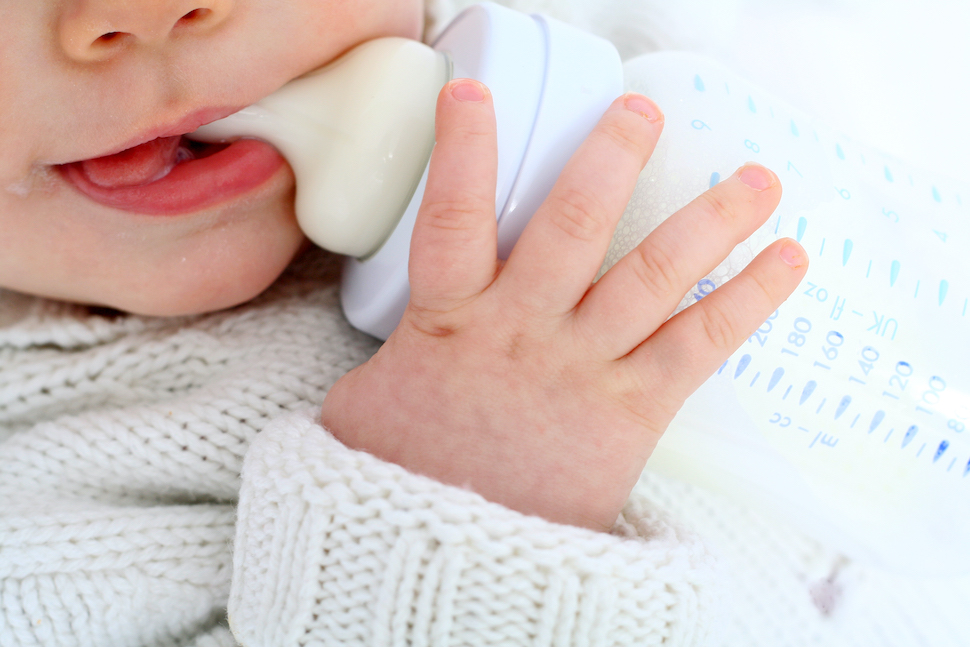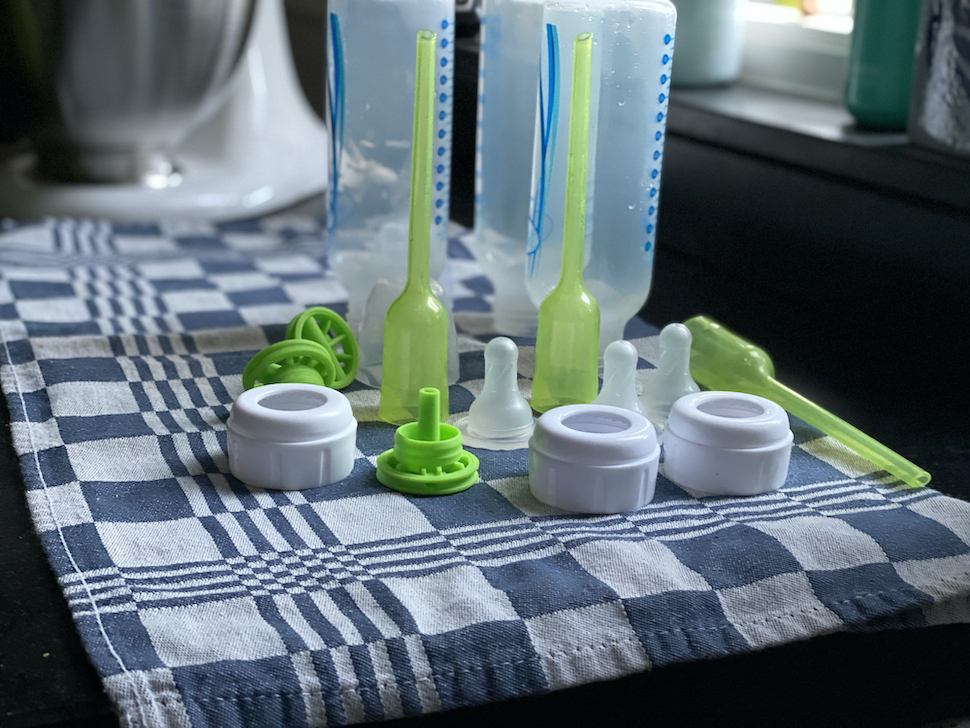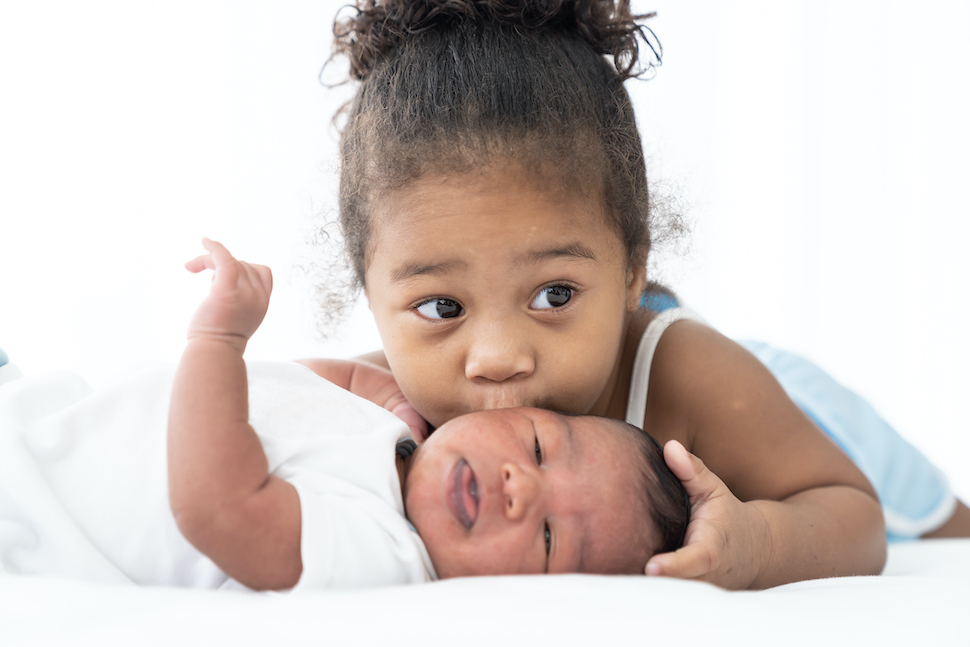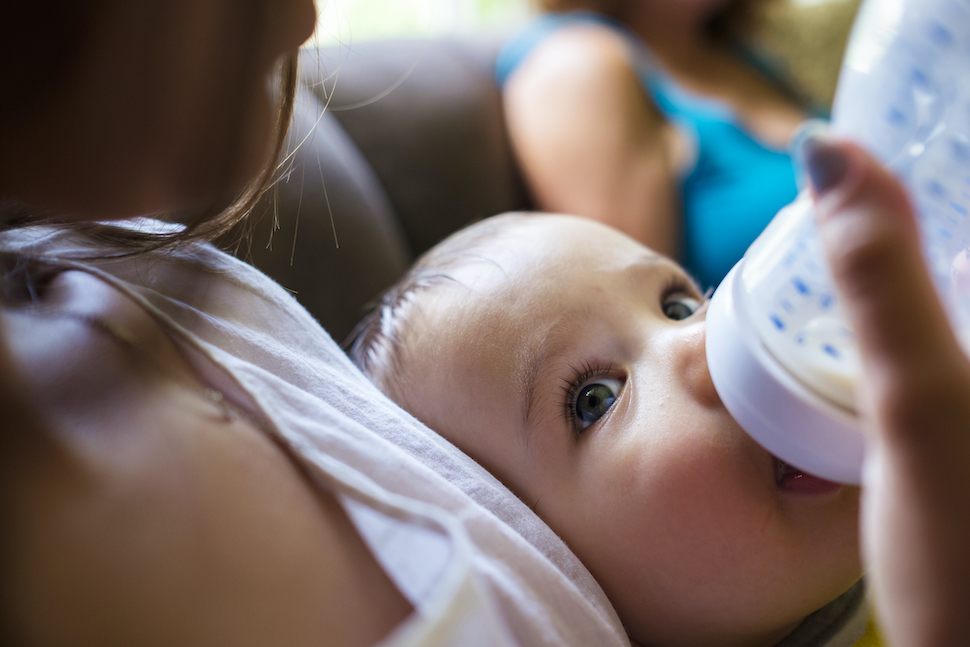Table of Contents
New parents have plenty to be stressed over in 2021. Yes, it’s oh-my-gosh, out-of-this-world exciting to meet your baby. And there’s nothing quite like the deep emotion-heavy feelings of love, accomplishment, and joy that wash over when you officially become a parent and lay eyes on your child for the first time.
But shortly after that—if not before it—the stress and pressure starts to build.
There are a million and one new things you have to think about with a newborn, regardless of how well you’ve prepared in advance.
It’s a labor of love literally like no other.
One of your most important jobs is making sure your baby stays safe and sound–and that means finding the right, non-toxic baby bottles to feed them with.
Unfortunately, zeroing in on the best non-toxic baby bottles can be a little more challenging than most people expect.
Sure, the market is filled with better options than at any other point in time. But there are still a lot of not so hot baby bottles filling shelves and online stores and sifting through them is a challenge.
Add in the stress of having a newborn and it’s not hard to feel unsure about your decisions.
That’s where this guide comes into play.
We’ll get into the ins and outs of why you might want to avoid “normal” baby bottles, why it is so important to choose non-toxic baby bottles, and what makes a top-quality non-toxic baby bottle.
Then we’ll break down great ready-to-buy choices to make research a little easier for you.
The Ugly Truth About (Most) Baby Bottles
For a long time the overwhelming majority of baby bottles available were made of plastic–particularly from the 1940s and 50s on.
Plastic baby bottles were seen to be a revolutionary new option compared to older, glass baby bottles.
They promised to be lightweight, easier to clean, less expensive, and generally just all around better than anything that the older, traditional glass baby bottles could have brought to the table.
Fast forward a few decades, though, and you get into the 90s and early 2000s when researchers started to look at some of the more harmful chemicals in traditional plastics.
One chemical in specific was found to be more dangerous than many others, and that’s Bisphenol A–usually shortened to BPA.
Unfortunately, researchers also found that almost every plastic baby bottle made (right from day one) contained a relatively high amount of this industrial chemical. On top of that, they discovered a number of other carcinogens, toxins, and potentially dangerous additives that were mixed right in, too.
Capable of doing a number on the biochemistry of adults, the impact that BPA has on babies and young children is even worse.
For starters, BPA has the ability to sort of “hijack” your natural hormone production–especially when it comes to estrogen.
This can affect a baby’s ability to grow and develop naturally and to enjoy normal cellular repair function, while depressing their energy levels, and even crippling their reproductive capabilities later on in life.
None of that’s good news.
Even worse is the fact that BPA can trigger a cascade of other hormonal reactions throughout the body of our babies. It can cause thyroid issues, is a known carcinogen, and generally just has no place in baby bottles.
Sadly, though, there are a lot of companies still making plastic baby bottles that are swimming in BPA.
They’re usually the least expensive options, so parents who are already on a tight budget with a new baby brought into the world tend to reach for these more often than not–especially if they don’t know how dangerous they can be.
Parents Should Strongly Consider Non-Toxic Baby Bottles

Thankfully, though, more and more companies are speaking out about the dangers of BPA, phthalates, and other toxins and carcinogens commonly found in baby bottles.
Not only are companies talking about these dangers and chemicals, but they’re taking steps to eliminate them completely from their products–while marketing them 100% BPA-free and 100% phthalate-free as well. (That’s pronounced ˈTHaˌlāt by the way.)
One of the most important reasons to choose non-toxic baby bottles is because your baby is going to be coming in contact with a bottle multiple times throughout the day.
And that contact is going to be happening with their little hands, their lips, and their mouths, creating something of a superhighway for BPA and other toxins to work their way into the bloodstream.
It doesn’t take a lot of exposure to wreak havoc, either. But I also don’t want to unduly alarm you—yes, plenty of babies use these so-called regular baby bottles and seem to be doing just fine. They’re also not outright outlawed, though regulations in the space are pretty lax. So it comes down to a personal choice. If your safety and health conscious for your baby, this is a great place to start. And why not?
Some researchers suggest that it only takes 23 mcg per pound of body weight to cause trouble, whereas others believe that number is even lower–sometimes as low as 4.5 mcg per pound of body weight.
When you’re talking about babies that often weigh less than 10 pounds (and certainly less than 20) it doesn’t take a lot of exposure to those chemicals to potentially cause problems.
Non-toxic baby bottles, on the other hand, pose little to none of any of these risks.
Instead you’re able to rest a lot easier knowing that your child is drinking from a bottle that isn’t going to cripple their short or long-term wellness.
Yes, costs are going to run a bit higher. But for many parents it’s well worth the extra expense.
What to Avoid In Baby Bottles

By choosing to toss regular baby bottles, you’re choosing to avoid some of the biggest risk factors that they very often include. Here are some of the biggest issues you’ll be steering clear of with this decision.
BPA
Perhaps most importantly, you won’t have to worry about any BPA ending up in the bloodstream of your baby when you go the non-toxic route.
As mentioned, BPA can throw the wellbeing and happiness of your baby through a loop–and it may not take too long to get things off track, either.
When you’re feeding your baby a handful of times a day–for 10, 15, maybe 20 minutes a session–that direct, extended contact is going to lead to BPA leaching.
Compound that over a couple of months and it’s a recipe for disaster.
By going the non-toxic bottle route, that’s avoided all together.
Phthalates
Non-toxic baby bottles also mean you’re going to be able to avoid getting your child mixed up with phthalates, too.
These chemical additives are found in almost every kind of plastic there is and have been linked to some pretty serious health issues in children.
Research suggests these problem can include:
- ADHD
- Asthma
- Autism Spectrum Issues
- Behavioral Problems
- Male Fertility Problems
- Neurodevelopmental Issues
- Obesity
- Type II Diabetes
The thing parents should remember is that most “regular” baby bottles are going to have BPA and/or phthalates in them.
What to Look for in Non-Toxic Baby Bottles

As far as what to look for in non-toxic baby bottles, you’ll want to focus your attention on:
1. Materials Matter
The material of the baby bottle you’re picking is the most important factor of all.
Like we mentioned earlier, the overwhelming majority of “regular” plastic baby bottles are going to include potentially toxic chemicals like BPA and phthalates.
Not all plastic baby bottles are filled with those, though.
100 percent BPA-free and 100 percent phthalate-free bottles do exist, and those you are going to want to be on the lookout for.
Just be sure to avoid any clear plastics that have a recycle symbol #7 on them, or those that have the letters “PC” stamped on the bottom.
Instead choose plastic bottles that are opaque or tinted as well as those that have recycle symbol #2 or #5.
You could also choose silicone, glass, or stainless steel baby bottles if you want to avoid the toxic issue altogether.
2. Bottle Shape is Important
Baby bottle shape is another big piece of the puzzle that you’ll want to get right.
You want something that offers just the right amount of capacity (small bottles are good for 4 ounces, larger bottles are between 8 and 12 ounces) without becoming cumbersome.
The age of your baby, the amount that they take during each feeding, and a handful of other factors will play a role in how big of a bottle you should use. This is something you’ll be able to dial in with a little more experience.
Generally, with a couple of 4 ounce baby bottles, you’ll be good to go.
Bottle shapes (standard, wide neck, and those designed to help babies with extra gassiness for colic) run the gamut. Find something that your baby likes and stick to it.
3. Don’t Forget About the Nipples
Nipple choice is hugely important, too.
Bottle nipples are most often made from latex and silicone, but they come in a bunch of different sizes and shapes. Orthodontic, angled, and vented shapes are pretty common–but you need to think about flow rates as well.
4. Is the Bottle Dishwasher Safe?
You don’t want to (or won’t be able to) spend too much time doing dishes on top of taking care of your newborn.
Get bottles that are dishwasher safe.
5. Is the Bottle Comfortable for Your Baby to Hold?
Choose baby bottles that your baby is going to be able to comfortably hold as they get older.
Ergonomics are something you’ll want to pay at least a little bit of attention to.
6. Does the Bottle Come with Extra Caps and Covers?
The more accessories your new baby bottles come with, the better. Shoot for baby bottles that have extra nipples, caps, and covers as they usually go missing first.

Nine of the Best Non-Toxic Baby Bottles
01. Philips Avent Natural Glass Baby Bottles
Phillips makes some of the best, and these glass bottles rank right up amongst the best they’ve ever made. Relatively lightweight with a wider base on the nipple, babies are naturally able to get a more consistent latch when using these. That’s important when transitioning from traditional breast-feeding to the bottle. Safe, chemical free, and super easy to clean these are baby bottles you’ll want to consider.
02. NUK Simply Natural Baby Bottles
Designed to mimic the natural breasts of a mother, the nipple design on these non-toxic bottles are impressive and effective. Not only is the design a huge promoter of a natural latch (making the transition to bottle feeding straightforward and less stressful), but the multiple holes in the nipple allows for a more consistent flow as well. Since they’re dishwasher safe and 100 percent free of BPA and phthalates, you won’t have to worry about toxins creeping into your baby’s bloodstream. Available in both 4 ounce and 8 ounce sizes, it’s not a bad idea to get your hands on a couple of each and keep them in a regular rotation moving forward.
03. Wawita Glass Baby Bottles (BPA Free)
BPA-free. These super cool, petite sized glass baby bottles are made of 100% all-natural material (borosilicate glass) that are free of chemical additives, toxins, and potential poisons that plague most regular baby bottle choices. Wrapped with a silicone “easy grip,” these glass bottles aren’t going to be difficult to grip or hold since there’s little worse than wrestling with a slick glass bottle that doesn’t want to behave while you’re trying to feed a hungry baby. An innovative vacuum-free nipple system guarantees your baby takes in a lot less air when feeding, too.
04. Dr. Brown’s Glass Baby Bottles
Engineered for babies that are prone to colic, Dr. Brown’s non-toxic glass baby bottles allow for a smoother latch, and easy transition to bottle feeding. They’re proven to provide near air-free feeding to reduce unwanted gas buildup in a baby’s stomach.
05. Evenflo Vented Glass Bottles
BPA-free and non-toxic, these feature a unique triple component design with a ventilation system similar to the anti colic options mentioned above. The real cool feature with these bottles, though, is how well they fit in your hand as well as how well they fit in your baby’s hand as they get older. Ergonomics on glass bottles can be tough to get right but Evenflo nailed it.
06. Lifefactory Bottle Set
One of the first companies to come out with a “modular” baby bottles set, the coolest thing about these choices is that they are designed to grow and change as your baby grows and changes–all while maintaining a 100% non-toxic, BPA and phthalates free system for your babies to eat from. Each of these glass bottles is made 100% in carefully inspected and certified production facilities in the U.S. and Europe, with capacities that range from 4 ounces to 9 ounces. A toxin free silicone sleeve wraps around these bottles as well, providing a bit of extra grip that traditional glass bottles don’t have. Multiple size and stage nipples are available as well, helping you to make the transition to breast-feeding simple but also giving your baby plenty of options as they grow and develop.
07. Kid Kanteen Baby Bottle (Stainless Steel)
You’re guaranteed not to have to worry about BPA and phthalates finding their way into the baby bottles of your choice when they are made from stainless steel–those chemicals are never used in their production. Compared to glass, stainless steel bottles are significantly lighter in weight, more ergonomically designed, and you don’t have to worry about them busting up and breaking should you drop them late at night. Warming a stainless steel bottle also takes less time (generally) as well–and that’s a huge bonus.
08. Mason Jar Baby Bottle
There are a couple of different “conversion kits” that you can get your hands to convert traditional 8 ounce Mason jars into dedicated non-toxic baby bottles. Some of the kits include a silicone sleeve to protect the glass bottles from breaking and to help with your grip, though not all of them will. They will all include nipples designed to fit on 8 ounce Mason jars, though–which is a big bonus considering how hard those might have been to track down otherwise. The obvious benefit here is that you know that these glass bottles are going to be free of toxins and potential contaminants. You also know that they are going to be temperature safe, pretty resilient, and about as durable as a glass bottle/jar can be. Ideally suited for babies that are a little older (because of the 8 ounce capacity) they’re not quite as ergonomically designed for tiny hands but should work well for mom and dad.
09. Pura Kiki Stainless Steel Baby Bottle
Another of the stainless steel choices worth considering, these are a little lighter weight than the options we highlighted above and include cool silicone accessories that allow you to turn these bottles into sippy cups, sport bottles, and more without much effort. That you can buy these as bottles for your newborn, continue using them throughout the bottle feeding stages, and then transition them into sippy cups as your baby gets older is nifty and convenient.
The non-toxic baby bottles highlighted above are well worth considering if you’re looking to avoid as many toxins as babily possible. Congratulations and good luck!










